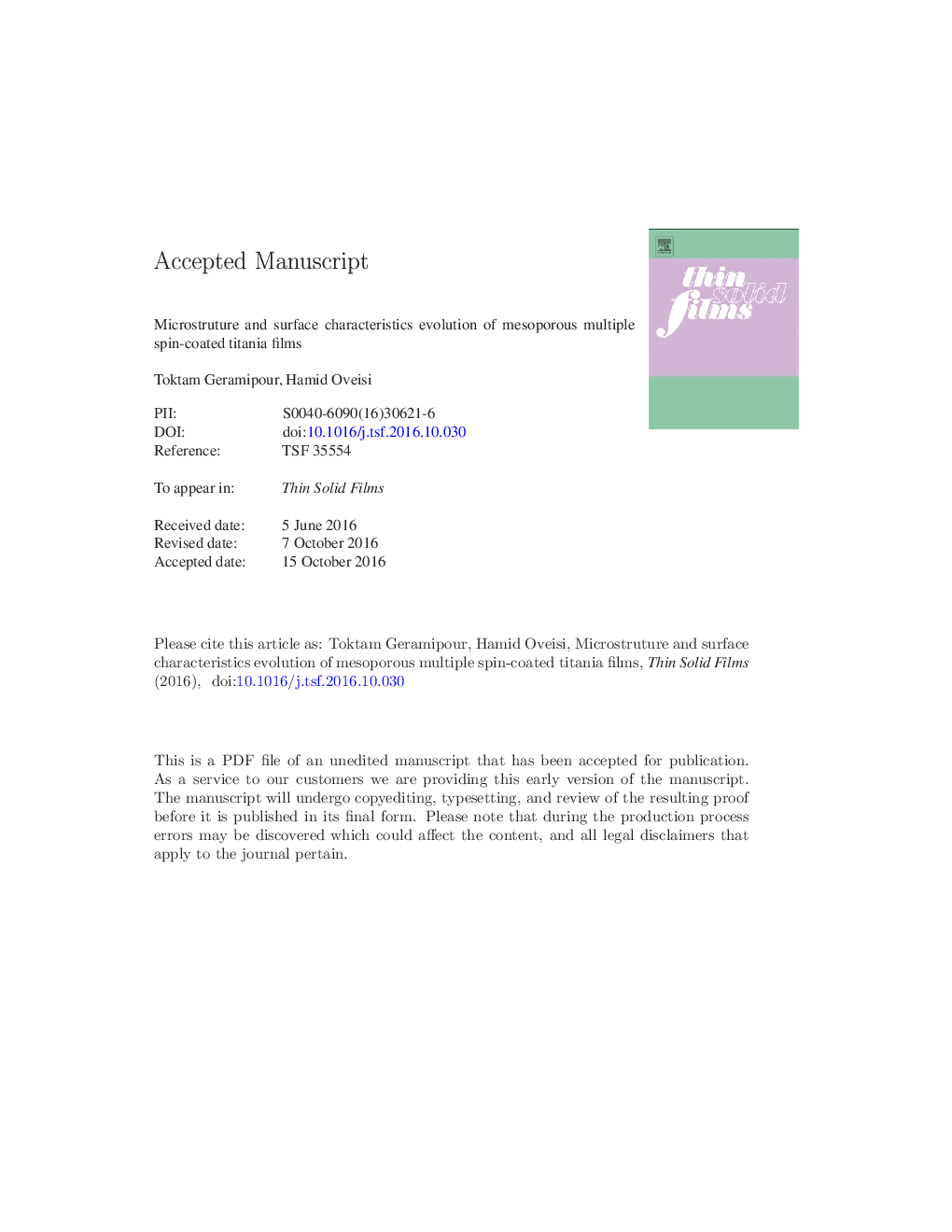| Article ID | Journal | Published Year | Pages | File Type |
|---|---|---|---|---|
| 5466522 | Thin Solid Films | 2016 | 24 Pages |
Abstract
Multilayer nanocrystalline mesoporous titania films were synthesized using the layer-by-layer deposition and surfactant-assisted sol-gel methods on glass substrates. The thickness, morphology and surface roughness of the films were systematically investigated using field emission scanning electron microscopy (FE-SEM) and atomic force microscopy (AFM). Multilayer films were manufactured by repeated spin coating followed by heat treatment at 250 °C for 1 h after each deposition, and a final calcination at 400 °C for 4 h. Multilayer films with completely uniform thicknesses between 470 nm-1.85 μm and without clear interfaces were obtained by 1-6 coating cycles. The X-ray diffraction (XRD) analysis demonstrated 9.60 nm anatase crystallites. Interestingly, AFM analysis indicated that the root mean square (rms) surface roughness of the films was significantly reduced from 3.11 to 1.03 nm by increasing the deposited layers from 1 to 6. Moreover, power spectral density (PSD) analysis revealed that the roughness exponent and fractal dimension values of all films fall within the range of 0.48-0.53 and 2.47-2.52, respectively. This suggests that while the first titania layer exhibits a coarse microstructure, it acts as an intermediate layer in the formation of improved microstructures by eliminating the lattice mismatch between the glass substrate and subsequent titania depositions. Altogether, our results demonstrate the formation of self-affine surfaces with quite similar dynamics evolution of roughness formation either on the glass substrate or titania layer.
Related Topics
Physical Sciences and Engineering
Materials Science
Nanotechnology
Authors
Toktam Geramipour, Hamid Oveisi,
